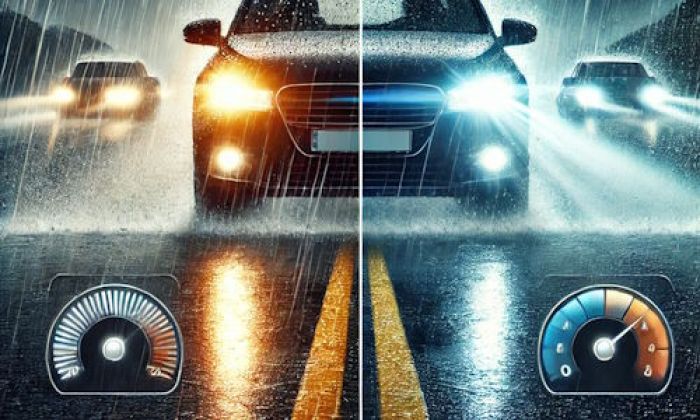Many of our readers wonder about the reliability of the 2022 Ford Explorer engine with 2.3 L displacement. So we gathered all the necessary information to reference its performance, specifications, longevity, and usual issues that previous owners experienced.
This car with small displacement houses a lot of power.
Ford introduced 2.3L EcoBoost in 2015 along with the 2.0L EcoBoost. The first 2.3L version went under the hood of a 2015 Lincoln MKC. After a year, Ford installed it in the 2015 Ford Explorer and 350hp Ford Focus RS. However, the engine became more popular when they installed it under the 310hp Ford Mustang.
Also, Ford designed this engine based on 2.0L Ecoboost, so you'd likely see their similarities. Aside from Ford Explorer, it has catered to six more Ford car models, a few on Lincoln SUVs and race cars like Zenos, VUHL, and Dallara units.
Ready to know more?

Key features and my opinion about the engine
- Production years:2015-now
- Average lifespan of 2.3L EcoBoost:120,000-140,000 miles
- Fuel supply type:direct injection
- Power range:270-395 hp
- Fuel efficiency:average
- Engine block material:aluminum
- Engine reliability score:low
- The most common problems:fatal overheating issues, very unreliable fuel supply system, turbocharger failure.
What do I Need to Know About the 2022 Ford Explorer 2.3L Engine?
The engine goes around a high-pressure cylinder block made of diecast and open-deck aluminum. It has a deck height and bore size similar to the 2.0L Ecoboost.
The block has an expanded oil and cooling system. Molded around the cylinders are strengthening ribs that resemble structured ladder frames.
The engine is a stroker, where the displacement increases using a 4340-steel crankshaft-creating a stroke of 94 mm, while its bore size is 87.5 mm. Its connecting rods are forged steel and shorter than the 2.0L Ecoboost conrods.
The engine utilizes lightweight but high-strength pistons. Attached around their diameter are steel piston rings and full-floating pins.
When it comes to lubrication, the engine has reduced piston skirt size and coating. And with lesser drainage holes, the mechanism paves the way for better lubrication.
It has a mechanism that constantly cools the cylinder with oil from the bottom side, with a specialized oil jet utilized for this job.
Under the engine are balance shafts, an oil pump driven by a chain, and a deep-sump oil pan made of aluminum. The oil pan contains baffles that prevent the oil from sloshing and maintain continuous delivery when driving actively.
On top of the block are four-stroke four aluminum head cylinders with four valves each. Also, each cylinder employs a spark plug and a GDI fuel injector. These cylinders are inline or straight engines, which align without offset in one row. The cylinder head has an integrated exhaust manifold designed to accommodate new twin roll twin-scroll turbos by designated three high-flow ports.
The exhaust valves are much bigger than the 2.0 L Ecoboost (28mm), which measures 30mm. Its intake valve diameter measures 32.5 mm. It uses premium material for the valve seat, which keeps the combustion chamber airtight.
With the Ecoboost camshafts having a higher lift and a Twin independent Variable Cam Timing System (Ti-VCT), the engine could control the intake and exhaust valves precisely. So it adjusts to shifting of speed and load. The block uses a revised intake manifold made of plastic with a significant volume increase. It also has an increased throttle body diameter.
With these specifications, here are what we love about the 2.3L Ecoboost in 2022 For Explorer:
- Powerful in small displacement
- Strong, smooth, and powerful sound, considering the engine, only has four cylinders
- Optimal fuel economy, with increased mileage
- Tuned for different models
- Improved low-end torque
- High-performance
The engine tuned to 2022 For Explorer runs on 300 hp at 5500 rpm and has a torque of 310 lb-ft at 3500 rpm.
How Long Does 2022 Ford EcoBoost 2.3L Engine Last?
The good thing about this engine is it does not require high-maintenance compared to other high-performance units. Although Ford has designed it to meet sporting ambitions and high-speed requirements from the drivers, you only need to perform the required oil changes and filter replacements.
However, this engine has varied durability output in different Ford cars. For example, this car engine may not last long enough for VUHL supercars with up to 405 hp or Dallara Stradale with 395 hp. But for units such as Mustang or Focus St, including 2022 For Explorer, it is highly durable.
And if you intend to push the engine by tuning, turbo upgrades, or bolt-on mods, you are challenging the longevity of this engine. The first consequence of forcing an unopened engine to its limits may shorten its lifespan. However, such modifications do not guarantee failure or success. If you did not take any shortcuts, you'd probably end up with a properly tuned 2.3L Ecoboost.
Initially, the engine has issues with failed gaskets on Ford Focus RS. The batch of these engine units had white exhaust leaks and coolant consumption. The incident revealed the wrong usage of the head gasket, which was supposed to be for the Mustang Ecoboost.
But in general, the engine is impressively durable, along with other versions of Ecoboost, including the 2.7 and 3.5L. You can rely on this engine and expect it to run up to 200,000 miles.
What are the Common Problems of Ford EcoBoost 2.3L Engines?
Although we know this engine is reliable, it is imperfect and may show some flaws.
- Fuel injection issues (Carbon Build-up, Power Loss)
The engine uses a Direct Injection (DI) system, wherein the DI sprays fuel directly on the cylinder. The oil blow-by makes it possible for the oil to get through the intake tracts that eventually flow through the intake ports.
Although the system is healthy for fuel economy, you cannot rely on it every time. For this reason, you may have to bring it for maintenance or repair every 50,000 miles.
The soot of carbon deposits may build up in this area, restrict the closing of valves, and result in performance drops, increased fuel consumption, and loss of power.
- Issues with turbocharger
Here come the most problems with turbocharged Ecoboost. Once the engine breaks, you may have second thoughts between going for repair or buying a new one. There is very little difference between the cost of repair and the brand-new Ecoboost.
- Overheating
Here's just one flaw you should remember. Although the engine design is for sports driving, you cannot overwork it by revving it up for longer. For this reason, high-power demanding cars like the VUHL and Dallara may find this engine unreliable. The issues with its head or head gasket may show up. And repairing it is pricey.
Engine Tuning of EcoBoost 2.3L Engine
As we have mentioned earlier, this turbocharged engine may somehow have breaking problems as soon as it nearly reaches its maximum capacity. Although it has an impressive low-end torque, pushing it to its limit could be stressful for the turbo and the engine itself.
But with proper tuning, we can gain control over its power and prevent engine failure. Tuning the 2.3L Ecoboost could contribute power gains of 30 to 50 whp and 60 to 80 wtq. If you have decided enough, get ready to shell out about $500 for the tune only.
No worries. Your next performance upgrades will bring out the true potential of your 2.3L Ecoboost with proper tuning.
Of course, you must modify and upgrade the intake for more air space. Your factory intake can already take your power stock and engine boost but remember that it struggles as you try to increase horsepower. Try a JLT Performance Intake here or a K&N AIS.
Also, you will need to reduce pressure from the back, so you need to upgrade the downpipe. An upgrade to your intercooler will keep the charge air cool.
Also, you might, as well, replace the inefficient rubber pipe with a hot pipe upgrade. And upgrading the cold pipe will ease the restrictions in the flow.
If these upgrades go smoothly, your Ecoboost could have a much better performance but poor longevity, of course.
However, you don't have to do this if you are not ready to lose the engine.
How to Maintain your EcoBoost 2.3L Engine?
You only have to follow the maintenance schedule of your 2.3L Ecoboost to make it to the 200,000 mileage.
- Change oil and oil filters at 5,000 to 7,000 miles.
- Replace the air filter every 10,000 miles if the weather is extreme and 20,000 for innate conditions.
- Replace your spark plugs 30,000 every mile.
- Change drive belts every 60,000 to 100,000 miles.
- Replace coolant every 30,000 miles.
- Check the timing chain at 100,000 miles for replacement.
Is the EcoBoost 2.3L Engine Reliable?
The 2.3L Ecoboost engine is reliable in many aspects. It can take the power of 300 hp at 5500 rpm or 310 lb-ft torque, even with a small displacement. We love how its engine is made to expand to create the 94mm stroke. Aside from this, Ford designed the block for high pressure and stress.
However, remember not to push it to its limit because this is where most problems arise. It would be useless to repair a broken Ecoboost engine.
Good thing that the engine requires less maintenance. Your 2022 Ford Explorer may be serviceable for up to 200,000 miles.
About the authors
The CarAraC research team is composed of seasoned auto mechanics and automotive industry professionals, including individuals with advanced degrees and certifications in their field. Our team members boast prestigious credentials, reflecting their extensive knowledge and skills. These qualifications include: IMI: Institute of the Motor Industry, ASE-Certified Master Automobile Technicians; Coventry University, Graduate of MA in Automotive Journalism; Politecnico di Torino, Italy, MS Automotive Engineering; Ss. Cyril and Methodius University in Skopje, Mechanical University in Skopje; TOC Automotive College; DHA Suffa University, Department of Mechanical Engineering






Add comment